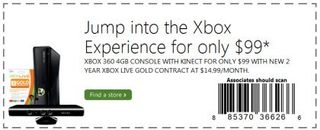Box Score E3 2012: 5 troubling signs for sports game fans across the world
Is it the beginning of the end for traditional console sports games?

Box Score is a weekly column that offers a look at sports games and the athletic side of the industry from the perspective of veteran reviewer and sports fan Richard Grisham.
E3 2012 is right around the corner, and shots have been fired across the bow of sports gamers everywhere. As gaming hardware and software sales continue to experience uncomfortable dips, announcements large and small have been made by the big boys of the industry – Electronic Arts, Take-Two, Microsoft, Sony, and Nintendo. Here’s a look at five that have caught my eye, and why they’re troubling to those of us that love the genre.
Sign #1: Low investments for next –generation consoles
Electronic Arts announced in their latest investor call that they’re investing $80 million in next-generation consoles. While that’s a lot of money to people like you and me, it’s a small R&D outlay for a strategic initiative for the world’s largest maker of sports simulation titles. Considering much of that may be allocated toward non-sports games such as Battlefield, The Sims, and Medal of Honor, that’s a red flag for Madden, NHL, NBA, and FIFA fans.
Most sports gamers assume that the next console generation will usher in a spectacular new era for their favorite games. That may be misguided.
“It's understandable to go into a new console generation with certain expectations, but we're still in the dark about a lot of things,” says Peter Skerritt, a longtime games industry analyst best known for his work at Consoleation and Popraza Press. “We've seen the WiiU in a limited capacity, but have seen nothing about new hardware from Microsoft and Sony. I think that we all need to temper our expectations until we have concrete facts and data to work from.”
Sign #2: New Xbox 360 sales model

One way to combat price as a barrier to entry is to come up with affordable cost models. Microsoft’s recent decision to start selling the 360 for $99 with a monthly subscription plan isn’t about the current Xbox – they’re testing the waters for ways to move more of their next console at launch, when they are traditionally the most expensive.
Is this the first evidence of a major shift in the way hardware will be sold in the future? Do concerns about price translate into fewer sports games available on the new systems when they hit?
Sign up to the 12DOVE Newsletter
Weekly digests, tales from the communities you love, and more
“I think this pilot program could mark a shift in how console hardware is sold, depending on how successful it is,” Skerritt continues. “I could see a scenario where the program is expanded to other big-box retailers after a time, but it's a bit late in this generation's life cycle to accurately judge how subsidies could affect overall hardware sales. I do think that subsidies-- especially in Microsoft's case-- work well since Xbox LIVE is such an integral part of Microsoft's strategy. Committing consumers to the service for two years opens the door for more potential revenue in the digital space, from renting movies to buying music for the hard drive. If anything, I think that subsidized consoles would help to draw more consumers in during the next console generation, making hardware more easily affordable up front.”
Sign #3: Vita support
Want a current-day preview of the almost-worst-case scenario for next-generation consoles? Look no further than the Vita. My love affair with the Sony’s beautiful handheld has been torrid, especially on the sports front. MLB 12 The Show, FIFA, Virtua Tennis, and Hot Shots Golf are all staples of my gaming week, but middling sales for the system show that I am clearly in the minority.
Word comes this week that there will be no NCAA Football or NHL 13 released for the system, and there’s still no news about NBA Live, NBA 2K, PES, Tiger Woods, or any other sports franchise for that matter. Even the announced Madden NFL 13 for the Vita appears to be a shell of itself, with no cross-platform saves and an engine that’s one or two years behind the big boy consoles. This is in line with Vita’s FIFA launch title, built on a foundation of older tech which renders cross-compatibility moot – and depresses me.

Does this portend a similar start to the next generation console cycle?
“Concern about Vita is valid, but probably a bit premature at the same time,” says Skerritt. “Given that trends are negative for handheld games versus tablet or smartphone games, third-party publishers aren't looking to take development risks on platforms that may not offer worthwhile returns on the investment. Having said that, we are only nearing the three-month mark for the Vita's life cycle here in the U.S., so more time and data are needed to determine whether Vita is really underperforming and not worth the development risk. E3 could offer some surprises which may help stimulate Vita interest.”
Sign #4: The end of the MLB 2K contract
Take-Two appears to be getting out of the sports game business altogether, with the exception of their top-selling NBA 2K basketball franchise. Strauss Zelnick, the chairman of Take-Two, has long promised to rid the company of money-losing deals, and it’s become clear that the MLB 2K series has been exactly that. While no one is talking publically about MLB moving forward, it’s a safe bet that baseball will see few, if any, releases on non-Sony consoles in the next few years.
There are myriad reasons for this, including an expensive license, poor sales numbers for baseball games in general, and a massive amount of development needed to create a new baseball game from scratch. Sports gamers are already without college basketball, and (other than the Sony-exclusive MLB The Show) major league baseball is on the same path.
Sign #5: FIFA Numbers
Plenty of eyes widened when Electronic Arts reported over $100 million in additional revenue from FIFA 12 DLC. That seems like a clear indicator that, when done right, non-traditional revenue sources from sports games can line publisher wallets, thus increasing development resources to make the core game better. Simple formula, right?
Not so fast, says Skerritt.

“I think we have to look at the expansion of the DLC and additional revenue models as where we're going here. FIFA's success has a lot to do with DLC and microtransactions, but also has a lot to do with representing the most popular sport in the world,” he concludes. “Similar models haven't worked as well for EA's Madden and NHL franchises in terms of revenue earned, so I think that popularity plays a big role. Aside from what EA has tried to do with its sports franchises, monetizing sports video games is a difficult undertaking. 2K and Visual Concepts were unable to do this with its NHL and MLB licenses, and the problem was compounded by perceived lower quality experiences versus the competition. The NBA license has worked out well for 2K despite the lack of monetization, which has been offset by putting forth better games than EA year after year.”
As much as sports gamers may not care about the business behind their favorite franchises, it’s important to understand the impact it has. After all, sports games built and distributed by publically-traded companies that need to make money to survive. Where the dollars go, so will they. If those dollars aren’t where we’re expecting them to be, chances are great games won’t be there either.
It’s always darkest before the dawn, though, and I’m hoping that a host of big announcements at E3 will prove most, if not all, of these signs as misleading. Even so, we continue to vault down an unfamiliar and ever-changing console landscape. The best days could be behind us.
Most Popular
